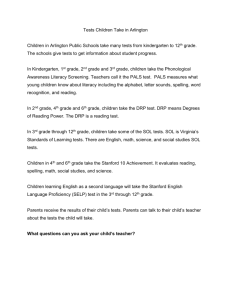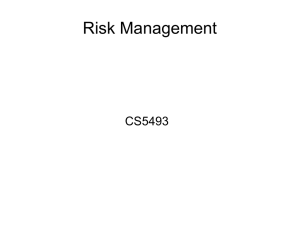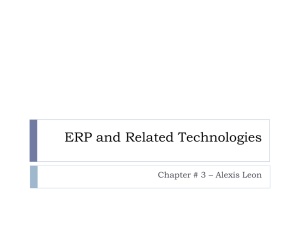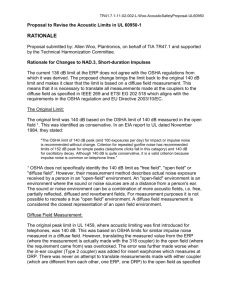TR41.3.3-15-05-006-AddingListenerReferencePoint(LRP)
advertisement
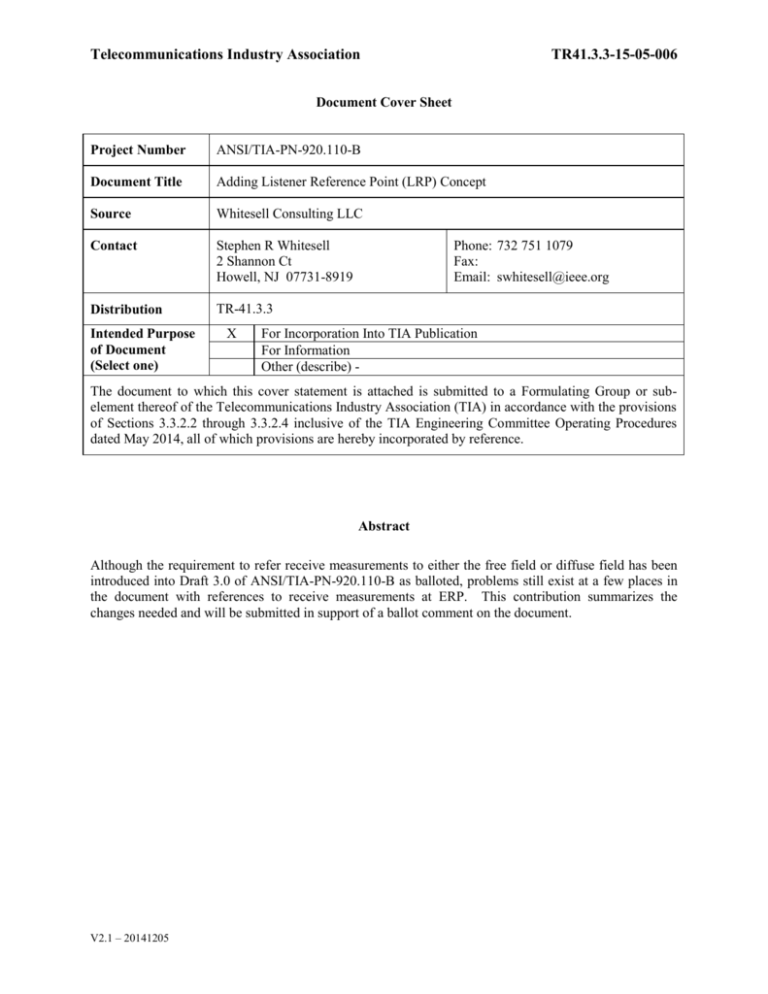
Telecommunications Industry Association TR41.3.3-15-05-006 Document Cover Sheet Project Number ANSI/TIA-PN-920.110-B Document Title Adding Listener Reference Point (LRP) Concept Source Whitesell Consulting LLC Contact Stephen R Whitesell 2 Shannon Ct Howell, NJ 07731-8919 Distribution TR-41.3.3 Intended Purpose of Document (Select one) X Phone: 732 751 1079 Fax: Email: swhitesell@ieee.org For Incorporation Into TIA Publication For Information Other (describe) - The document to which this cover statement is attached is submitted to a Formulating Group or subelement thereof of the Telecommunications Industry Association (TIA) in accordance with the provisions of Sections 3.3.2.2 through 3.3.2.4 inclusive of the TIA Engineering Committee Operating Procedures dated May 2014, all of which provisions are hereby incorporated by reference. Abstract Although the requirement to refer receive measurements to either the free field or diffuse field has been introduced into Draft 3.0 of ANSI/TIA-PN-920.110-B as balloted, problems still exist at a few places in the document with references to receive measurements at ERP. This contribution summarizes the changes needed and will be submitted in support of a ballot comment on the document. V2.1 – 20141205 Telecommunications Industry Association TR41.3.3-15-05-006 The Issue Draft 3.0 of ANSI/TIA-PN-920.110-B, as submitted for ANSI ballot, includes the following text near the beginning of the Receive Performance (5.4) section: 5.4.1 Free-field and Diffuse-field Acoustical Reference Points The receive acoustic tests for a communications device with a handset are made at the earDrum Reference Point (DRP) of the HATS. When evaluating the communications device for compliance with this standard, the receive frequency response, acoustic output level, noise and distortion test results shall be translated to either free-field (FF) or diffuse-field (DF) sound conditions. The communications device shall demonstrate compliance by passing all of the applicable receive tests at one of these two acoustical reference points. Passing some tests at the FF reference point and other tests at the DF reference point is not considered being in compliance, although passing all tests at both reference points is acceptable. Conversational Gain (5.4.5) is an exception and shall be evaluated using FF sound conditions only. [There are then two paragraphs discussing IEEE Std 1654-2008 and the translation from DRP to FF or DF.] While the intent is clear and is dealt with properly for most receive requirements, the text regarding receive frequency response still contains mention of the Ear Reference Point (ERP): 5.4.3 Receive Frequency Response The receive frequency response is the overall response of the codec receive filter, receive amplifier and transducer. The receive frequency response is the ratio of the sound pressure measured in the ear simulator to the voltage input to the reference codec, or digital bit stream equivalent, for each frequency or frequency band (fi) as shown in Eq 3 below: SJE = 20 log10 (𝑃𝐸/𝑉𝑅) dB re 1 Pa/V Eq 3 Where SJE = Receive Sensitivity, Junction to Ear, at fi. PE = ERP Sound pressure measured by ear simulator at fi. Measurement data are converted from the Drum Reference Point, DRP to the ERP. VR = RMS Input voltage to the reference codec, or digital bit stream equivalent, at fi. 5.4.3.1 Wideband Requirement The wideband receive frequency response at the ERP shall be measured in 1/12th octave bands and shall fall between the upper and lower limits given in Table 10 and shown in Figure 9. ..... 5.4.3.2 Narrowband Requirement The narrowband receive frequency response at the ERP shall be measured in 1/12th octave bands and shall fall between the upper and lower limits given in Table 11 and shown in Figure 10. ..... The text below the speaker symbol in the lower left corner of Figures 1 and 2 also refers to “Ear Sound Pressure at ERP”. Page 2 Telecommunications Industry Association TR41.3.3-15-05-006 IEEE STIT Approach The latest draft of IEEE Std 269 (D57.0, March 2015) has addressed this issue by defining the “listener reference point (LRP)” as follows: listener reference point (LRP). A generic term representing DRP, ERP, FF, DF, NF, or any other specified point or sound field. LRP applies to receive, sidetone, and end-to-end speech transmission paths. It then defines the receive frequency response as follows: 11.2.2 Receive frequency response Receive frequency response is the ratio of sound pressure at the Listener Reference Point (LRP) to the voltage input at the Receive Electrical Test Point (RETP). The receive frequency response, HR(f) in dB, is given by: G (f) H R ( f ) 20 log LRP in dB Pa/V GRETP(f) where: GLRP(f) is the rms amplitude spectrum at LRP GRETP(f) is the rms amplitude spectrum at RETP It also uses the term “drum reference point” rather than “earDrum Reference Point” for DRP: drum reference point (DRP). A point located at the end of the ear canal, corresponding to the eardrum position. Proposed Changes to ANSI/TIA-PN-920.110-B The following changes are proposed for ANSI/TIA-PN-920.110-B: 1. Add the following definitions to Clause 3.1: Drum Reference Point (DRP): A point located at the end of the ear canal, corresponding to the eardrum position. Also the point at which the ear simulator used with a head and torso simulator (HATS) measures the sound pressure. Listener Reference Point (LRP): A generic term representing the location at which the acoustic output from the receiver is to be determined or specified. This may be the FF, DF, or ERP. 2. Modify the acronym for DRP and add a new acronym for LRP in Clause 3.2 as follows: DRP Drum Reference Point LRP Listener Reference Point 3. Modify the text below the speaker symbol in the lower left corner of Figures 1 and 2 as follows: Ear Sound Pressure at LRP Page 3 Telecommunications Industry Association TR41.3.3-15-05-006 4. Modify the title and first paragraph of Clause 5.4.1, and add a new fourth paragraph, as shown below: 5.4.1 Listener Reference Point The receive acoustic tests for a communications device with a handset are made at the drum reference point (DRP) of the HATS. When evaluating the communications device for compliance with this standard, the receive frequency response, acoustic output level, noise and distortion test results shall be translated to either free-field (FF) or diffuse-field (DF) sound conditions. The communications device shall demonstrate compliance by passing all of the applicable receive tests at one of these two acoustical reference points. Passing some tests at the FF reference point and other tests at the DF reference point is not considered being in compliance, although passing all tests at both reference points is acceptable. Conversational Gain (5.4.5) is an exception and shall be evaluated using FF sound conditions only. In addition, if receive loudness rating (RLR) is chosen as the method for demonstrating compliance with the requirement for Receive Output (5.4.4), the sound pressure measured at DRP must be translated to the ear reference Point (ERP). For simplicity, the term listener reference point (LRP) is used generically to refer to the FF, DF, or ERP. ..... [New] Annex A of IEEE Std 1652-2008 also provides the transformation curve and tabular data relating the sound pressure at ERP to that at DRP needed for RLR calculations. In this case, the translation data is from DRP to ERP and may be used directly. It is reproduced in Annex C of this standard for convenience. Table C.1 (1/12th octave) and Table C.2 (R40) contain tabular values for the DRP to ERP transformation that are to be added to the measured results at DRP to determine the ERP results. Figure C.1 provides a graphical presentation of the DRP to ERP transfer function. 5. Modify the text of Clause 5.4.3 and its sub-clauses to read as follows: 5.4.3 Receive Frequency Response The receive frequency response is the overall response of the codec receive filter, receive amplifier and transducer. The receive frequency response is the ratio of the output sound pressure at the LRP (FF or DF) to the voltage input to the reference codec, or digital bit stream equivalent, for each frequency or frequency band (fi) as shown in Eq 3 below: SJE = 20 log10 (𝑃𝐸/𝑉𝑅) dB re 1 Pa/V Eq 3 Where SJE = Receive Sensitivity, Junction to Ear, at fi. PE = LRP sound pressure measured by ear simulator at DRP and translated to the FF or DF, at fi. VR = RMS input voltage to the reference codec, or digital bit stream equivalent, at fi. 5.4.3.1 Wideband Requirement The wideband receive frequency response shall be measured at the DRP in 1/12th octave bands. After translation to the FF or DF, it shall fall between the upper and lower limits given in Table 10 and shown in Figure 9. ..... 5.4.3.2 Narrowband Requirement The narrowband receive frequency response shall be measured at the DRP in 1/12th octave bands. After translation to the FF or DF, it shall fall between the upper and lower limits given in Table 11 and shown in Figure 10. ..... Page 4 Telecommunications Industry Association TR41.3.3-15-05-006 6. Make the following change to the first sentence in both Annex B and Annex C: Frequency response measurements using the Type 3.3 ear are made at the Drum Reference Point (DRP). 7. Change the sentence providing reference information in the third paragraph of Annex C to read as follows: For complete information refer to ITU-T Recommendation P.58 and IEEE Std 1652. Page 5
